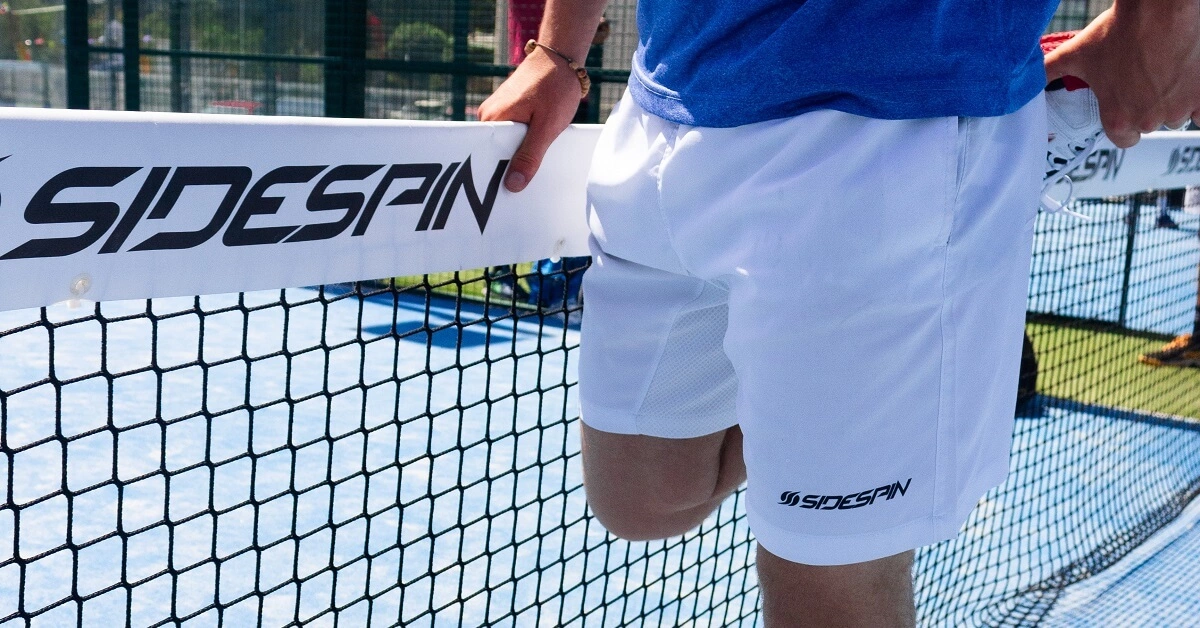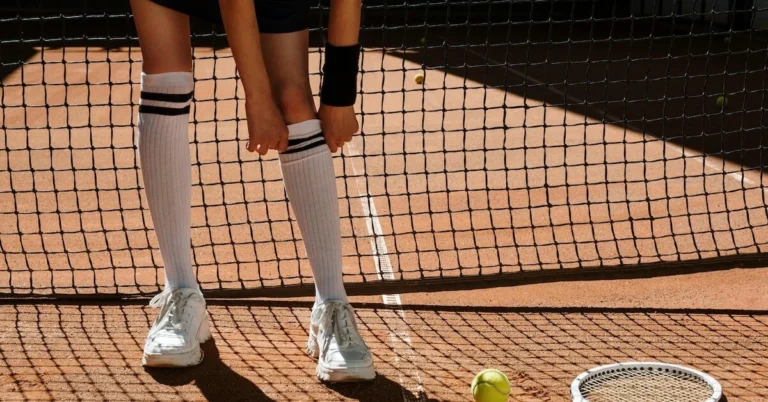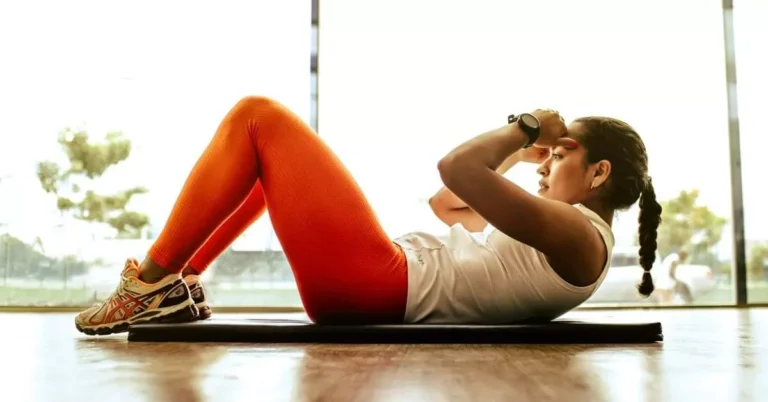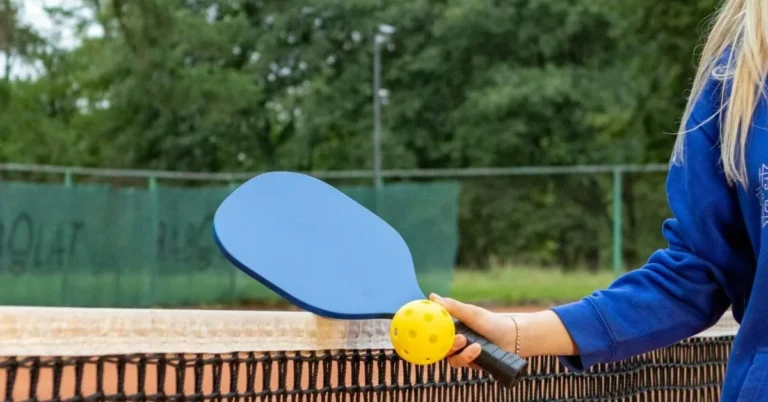If you’re an avid tennis player, you’re likely familiar with the importance of stretching before a match. But did you know that stretching after a match is just as crucial? Cool-down stretches help your body gradually return to its resting state, reduce muscle soreness, and prevent injury. In this article, we’ll explore the best tennis cool-down stretches to incorporate into your post-match routine.
When you finish playing a match, your muscles are likely fatigued and tight. A proper cool-down routine can help alleviate this discomfort and promote recovery. The stretches you perform should target the muscles you used most during the match, such as your calves, hamstrings, and shoulders. By lengthening these muscles back to their original state, you can reduce the risk of injury and improve your overall flexibility.
It’s important to note that cool-down stretches should be performed after your heart rate has returned to normal. This typically means waiting a few minutes after the match ends before beginning your stretching routine. By giving your body time to recover, you’ll be able to stretch more effectively and reduce your risk of injury. In the following sections, we’ll take a closer look at some of the best cool-down stretches for tennis players.
Importance of Cool-Down Stretches
After playing a game of tennis, your body needs time to recover and return to its normal state. This is where cool-down stretches come in. Cool-down stretches are exercises that help to lower your heart rate, reduce muscle soreness and tightness, remove waste products from working muscles, and prevent blood pooling.
One of the most important benefits of cool-down stretches is that they help to prevent injuries. When you play tennis, your muscles are put under a lot of stress, and if you don’t take the time to cool down properly, you increase your risk of injury. By stretching after playing, you help to reduce the risk of muscle strains, tears, and other injuries.
Cool-down stretches are also important for recovery. When you play tennis, your body produces lactic acid, which can cause muscle soreness and fatigue. By doing cool-down stretches, you help to remove this lactic acid from your muscles, which can speed up your recovery time.
Another benefit of cool-down stretches is that they can help to improve your flexibility. When you play tennis, your muscles can become tight and inflexible, which can affect your performance and increase your risk of injury. By doing cool-down stretches, you help to keep your muscles flexible, which can improve your range of motion and overall performance.
Finally, cool-down stretches can help to lower your heart rate and promote relaxation. After playing a game of tennis, your heart rate is elevated, and your body is in a state of high alert. By doing cool-down stretches, you help to lower your heart rate and promote relaxation, which can help you to feel more calm and centered.
Physiology of Stretching
Stretching is a physical activity that aims to improve flexibility and range of motion of the body. It involves lengthening the muscles and tendons to increase mobility and prevent injury.
When you perform any physical activity, your muscles contract and shorten. Stretching after exercise helps to elongate these muscles back to their original length. This is important because shortened muscles can lead to muscle imbalances, which can cause pain and injury.
Stretching also helps to improve joint mobility and healthy functional joint range. This is because stretching helps to lubricate the joints and increase blood flow to the surrounding tissues. This increased blood flow helps to remove waste products from the muscles and promotes the delivery of oxygen and nutrients to the muscles.
In addition to improving mobility and preventing injury, stretching can also help to improve your athletic performance. For example, stretching can help to improve your rotation and core stability. This is important for tennis players because the sport requires a lot of rotational movements and core stability.
It is important to note that stretching should not be used as a warm-up activity. Instead, you should perform dynamic stretches before exercise to warm up your muscles and prepare them for the demands of the sport. After exercise, you should perform static stretches to cool down and help your muscles recover.
Types of Stretches
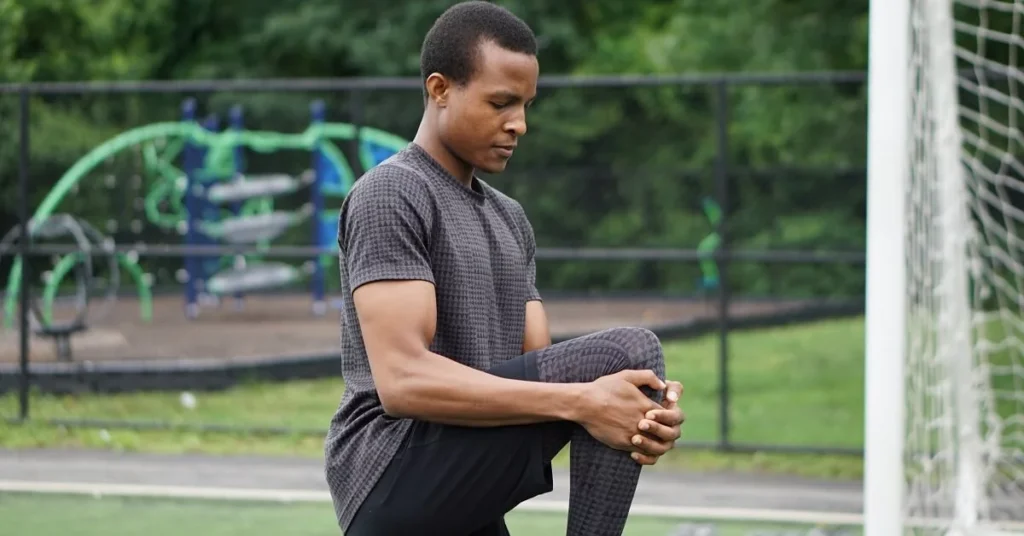
After playing tennis, it is important to cool down your body with stretches. There are two main types of stretches: dynamic and static stretches.
Dynamic Stretches
Dynamic stretches involve movement and are typically done before playing tennis to warm up your body. These stretches help increase blood flow and flexibility, which can help prevent injury. Some examples of dynamic stretches include:
- Leg swings: Stand facing a wall and swing one leg forward and backward, then side to side. Repeat with the other leg.
- Arm circles: Stand with your arms out to the side and make small circles with your arms, gradually increasing the size of the circles.
- Walking lunges: Take a step forward with one leg and lower your body until your thigh is parallel to the ground. Repeat with the other leg.
Static Stretches
Static stretches involve holding a position for a period of time without movement. These stretches are typically done after playing tennis to cool down your body. Static stretches can help improve flexibility and reduce muscle soreness. Some examples of static stretches include:
- Hamstring stretch: Sit on the ground with one leg straight out in front of you and the other leg bent. Reach forward and touch your toes on the straight leg.
- Quad stretch: Stand with one hand on a wall for balance and grab your ankle with your other hand. Pull your heel towards your buttocks to stretch your quad.
- Shoulder stretch: Hold one arm out in front of you and bring it across your body, using your other arm to pull it towards your chest.
It is important to incorporate both dynamic and static stretches into your stretching routine. A full body stretch program can help you maintain flexibility and prevent injury. Consult with a trainer or coach to develop a stretching program that is right for you.
Guidelines for Effective Stretching
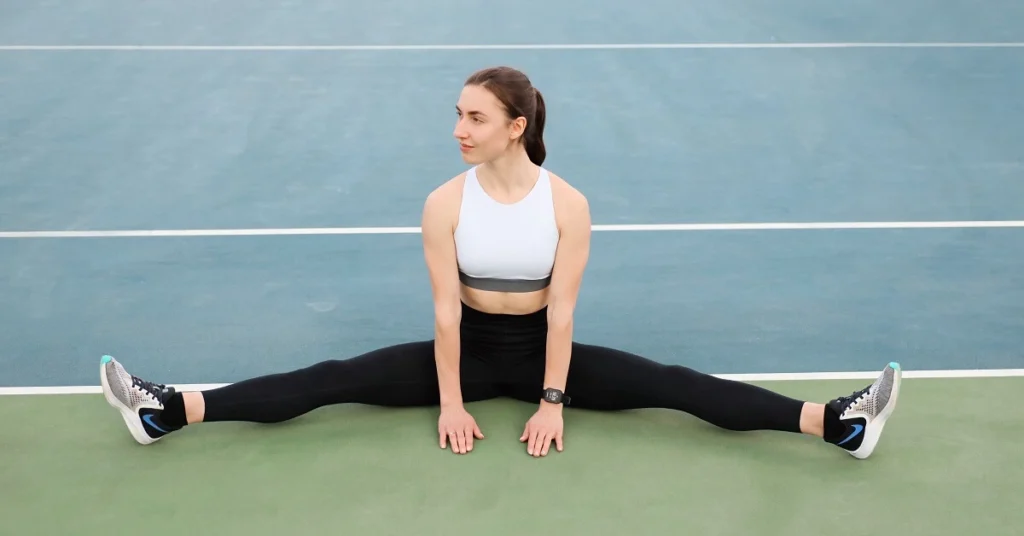
Stretching is a crucial part of any tennis player’s cool-down routine. It helps to prevent injury, reduce muscle soreness, and improve flexibility. Here are some guidelines to ensure that your stretching is effective:
Warm-up First
Before you begin stretching, it’s important to warm up your muscles. This can be done by jogging, biking, or swimming for 10 minutes. A warm-up helps to increase blood flow and prepares your muscles for stretching.
Breathe
Breathing is an important part of stretching. You should breathe deeply and steadily while holding each stretch. This helps to increase oxygen flow to your muscles and improve your overall flexibility.
Hold Each Stretch
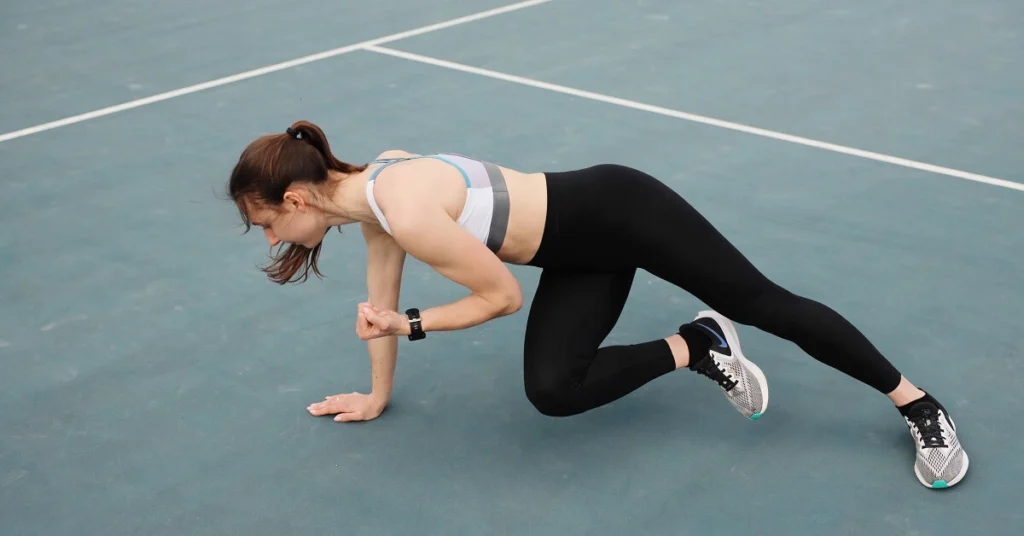
Hold each stretch for at least 20-30 seconds. This allows your muscles to relax and lengthen. It’s important to avoid bouncing or jerking during your stretches as this can lead to injury.
Don’t Push Too Hard
Stretching should never be painful. You should feel a gentle pull in your muscles, but you should never push yourself to the point of pain. If you feel discomfort, ease off the stretch slightly.
Stretch All Muscles
It’s important to stretch all of your major muscle groups, including your legs, arms, back, and neck. This will help to improve your overall flexibility and reduce your risk of injury.
Hydrate and Refuel
After your tennis match, it’s important to hydrate and refuel your body. Drink plenty of water and consider a sports drink to replace electrolytes lost during exercise. Eating a snack with protein can also help to aid in muscle recovery.
By following these guidelines for effective stretching, you can improve your flexibility, prevent injury, and reduce muscle soreness after your tennis match.
Specific Tennis Cool-Down Stretches
After playing tennis, it’s important to cool down properly to prevent injury and promote recovery. One way to do this is by stretching. Here are some specific cool-down stretches for tennis players that target different parts of the body.
Lower Body Stretches
The lower body is heavily used in tennis, so it’s important to stretch it out after playing. Here are some stretches that can help:
- Calf Stretch: Stand facing a wall with your hands on the wall at shoulder height. Step your left foot back and press your heel into the ground. Keep your right knee bent and your left leg straight. Hold for 30 seconds and then switch sides.
- Quadriceps Stretch: Stand with your feet hip-width apart. Bend your left knee and bring your heel towards your buttocks. Hold your left ankle with your left hand and pull it towards your buttocks. Hold for 30 seconds and then switch sides.
- Hamstring Stretch: Sit on the ground with your legs straight out in front of you. Reach forward towards your toes and hold for 30 seconds.
- Groin Stretch: Sit on the ground with the soles of your feet together. Use your elbows to push your knees towards the ground. Hold for 30 seconds.
Upper Body Stretches
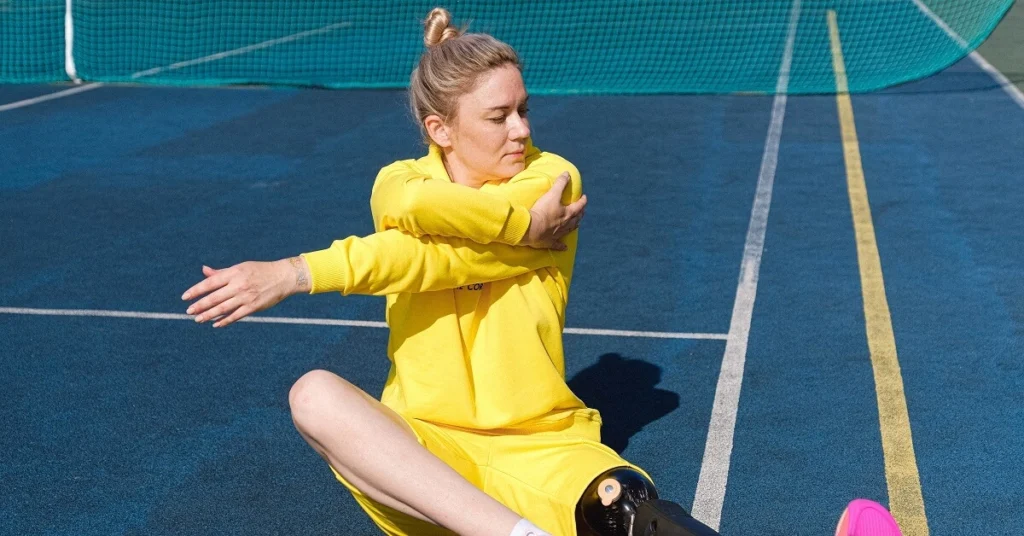
The upper body is also used in tennis, particularly the shoulders and wrists. Here are some stretches that can help:
- Shoulder Stretch: Stand with your feet hip-width apart. Bring your left arm across your body and use your right arm to hold it in place. Hold for 30 seconds and then switch sides.
- Wrist Stretch: Hold your left arm out in front of you with your palm facing down. Use your right hand to gently pull your fingers back towards your wrist. Hold for 30 seconds and then switch sides.
- Triceps Stretch: Raise your left arm above your head and bend your elbow so that your hand is behind your neck. Use your right hand to gently push your left elbow towards your head. Hold for 30 seconds and then switch sides.
Core and Back Stretches
The core and back are important for stability and power in tennis. Here are some stretches that can help:
- Supine Low Back Twist: Lie on your back with your arms out to the sides and your knees bent. Lower your knees to the right side and look to the left. Hold for 30 seconds and then switch sides.
- Hip Flexor Stretch: Kneel on your left knee with your right foot in front of you. Lean forward and press your hips towards the ground. Hold for 30 seconds and then switch sides.
- Cross Body Shoulder Stretch: Stand with your feet hip-width apart. Bring your left arm across your body and use your right arm to hold it in place. Turn your body to the right and hold for 30 seconds. Then switch sides.
Remember to hold each stretch for at least 30 seconds and breathe deeply throughout. These stretches can help prevent injury and promote recovery after playing tennis.
Advanced Stretching Techniques
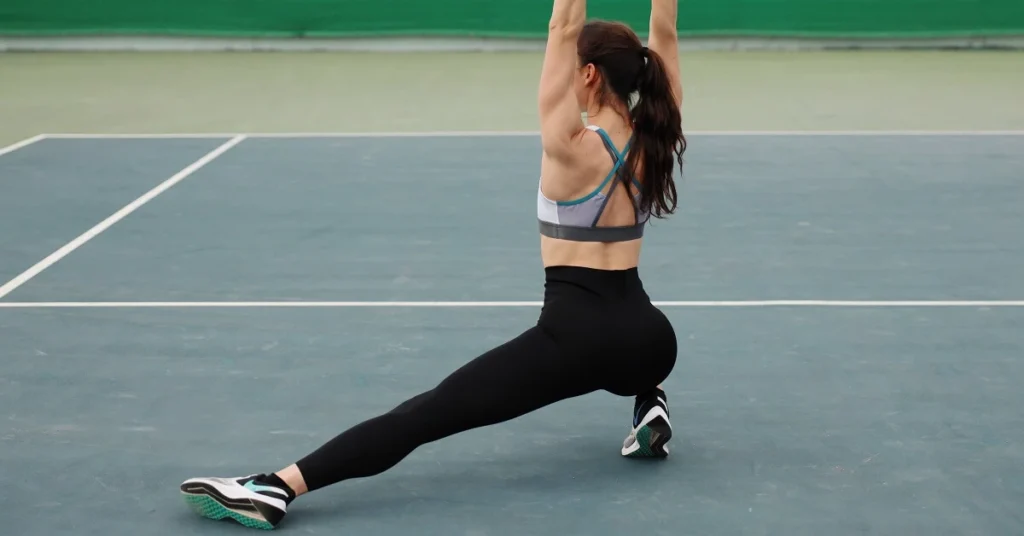
To take your tennis cool-down to the next level, consider incorporating advanced stretching techniques into your routine. Here are a few options to try:
Dynamic Stretching
Dynamic stretching involves moving through a range of motion to warm up the body and increase flexibility. This type of stretching can be particularly effective for tennis players, as it mimics the movements required on the court. Some dynamic stretches to try include:
- Walking lunges with a twist
- High knees
- Butt kicks
- Leg swings
Incorporating dynamic stretching into your cool-down routine can help improve your range of motion and reduce your risk of injury.
Static Stretching
Static stretching involves holding a stretch for a period of time (usually around 15-30 seconds) to increase flexibility and reduce muscle tension. While static stretching is typically done as part of a warm-up, it can also be effective for cooling down after a match. Some static stretches to try include:
- Hamstring stretch
- Quad stretch
- Shoulder stretch
- Tricep stretch
Incorporating static stretching into your cool-down routine can help improve your flexibility and reduce muscle soreness.
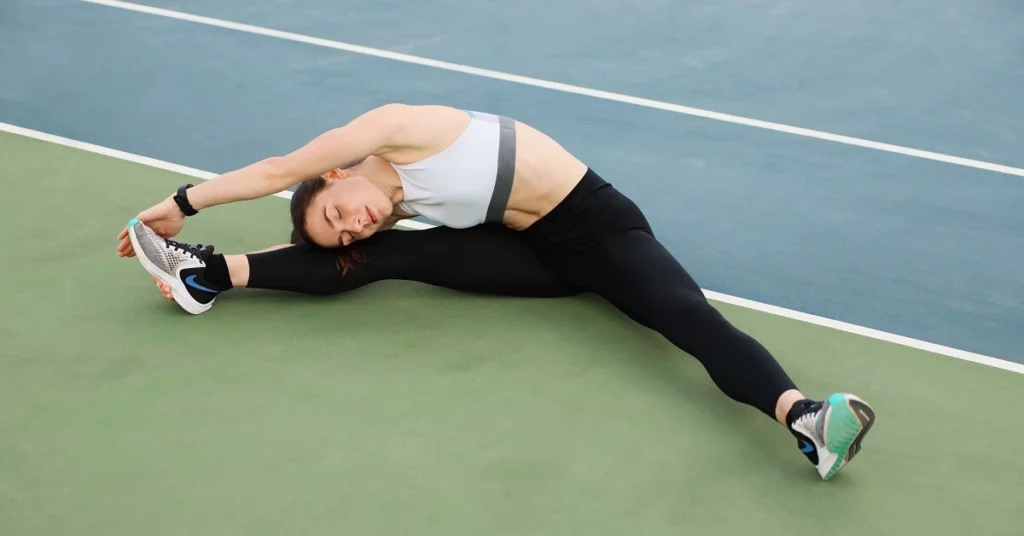
Foam Rolling
Foam rolling involves using a foam roller to massage your muscles and release tension. This technique can be particularly effective for targeting tight or sore areas. Some foam rolling exercises to try include:
- IT band roll
- Quad roll
- Back roll
- Calf roll
Incorporating foam rolling into your cool-down routine can help improve your muscle recovery and reduce muscle soreness.
Lunges
Lunges are a great way to stretch your hips, quads, and hamstrings after a match. To perform a lunge:
- Step forward with your right foot and lower your body until your right thigh is parallel to the ground.
- Hold the stretch for 15-30 seconds.
- Repeat on the other side.
Incorporating lunges into your cool-down routine can help improve your flexibility and reduce muscle soreness.
By incorporating advanced stretching techniques into your tennis cool-down routine, you can improve your flexibility, reduce muscle soreness, and reduce your risk of injury.
Dealing with Soreness and Pain

After a rigorous tennis match or workout, it’s common to experience soreness and pain in your muscles and joints. This discomfort can be caused by overuse, improper technique, or even a previous injury. Fortunately, there are several ways to manage and alleviate these symptoms.
One of the best ways to deal with soreness and pain is to rest and allow your body to recover. You can also try low-impact activities such as walking, jogging, or using a stationary bike to keep your body moving without putting too much strain on your muscles.
Stretching is another effective way to relieve soreness and pain. The butterfly stretch, for example, can help stretch your groin and inner thighs, while wrist and forearm stretches can help alleviate pain in your arms and wrists.
If your pain and soreness persist, it may be time to seek professional help. A physical therapist can help you identify the root cause of your discomfort and develop a personalized treatment plan to alleviate your symptoms.
In some cases, you may need to consult with a doctor to manage more severe injuries such as sprains or strains. It’s important to seek medical attention if you experience persistent pain, swelling, or limited mobility.
Remember to listen to your body and take the necessary steps to manage soreness and pain. With the right approach, you can keep your body healthy and pain-free, allowing you to continue playing tennis at your best.
Practice and Consistency
In sports, practice makes perfect. The same is true for tennis cool-down stretches. Consistently practicing these stretches after each match or practice session can help improve your overall performance and prevent injuries.
As an athlete, it’s important to make time for cool-down stretches after every tennis session. Not only does it help reduce muscle soreness, but it also aids in the recovery process. By stretching your muscles after a workout, you help lengthen them back to their original length and release any muscle tension.
To make the most of your cool-down stretches, it’s important to practice them consistently. Incorporate them into your routine after every tennis session to help your muscles recover and prepare for the next session.
In addition to helping with muscle recovery, cool-down stretches can also improve your cardiovascular health. By incorporating cardio exercises such as jogging, biking, or swimming into your cool-down routine, you can help improve your heart health and endurance.
By making cool-down stretches a consistent part of your tennis practice routine, you can improve your overall performance and reduce your risk of injury. Remember to always listen to your body and adjust your stretches as needed.
FAQ
What are some effective cool down exercises for tennis players?
Some effective cool down exercises for tennis players include cardio exercises such as jogging, biking or swimming for 10 minutes, stretching exercises that help lengthen muscles back to the original length and improve joint mobility, and foam rolling to decrease muscle soreness and stiffness. Bear hug, wrist/forearm stretch, and foam rolling can also be incorporated in the stretching section of your program to further decrease muscle soreness and stiffness. Remember not to hold your breath while stretching or foam rolling. Focus on slow deep breathing in order to achieve a deeper stretch.
How long should a cool down last after playing tennis?
A cool down should last at least 5-10 minutes after playing tennis. This will help your heart rate and breathing rate to return to normal and prevent blood from pooling in your legs. It is important to stretch and foam roll during this time to help your muscles recover and prevent injury.
What are some dynamic stretches that can be done before playing tennis?
Some dynamic stretches that can be done before playing tennis include walking lunges, high knees, butt kicks, and side shuffles. These stretches help to warm up your muscles and prepare your body for the physical demands of playing tennis. It is important to perform these stretches before playing tennis to prevent injury.
What are some back stretches that can benefit tennis players?
Some back stretches that can benefit tennis players include the cat-camel stretch, child’s pose, and the seated spinal twist. These stretches help to improve flexibility and range of motion in your back, which can help to prevent injury and improve your performance on the court. Remember to hold each stretch for at least 30 seconds and to breathe deeply throughout the stretch.
We’re curious about your experience with tennis cool-down stretches. What stretches have you found most effective for post-match recovery? Share your insights and tips in the comments below and let’s help each other prevent injuries and promote muscle recovery after playing tennis!

